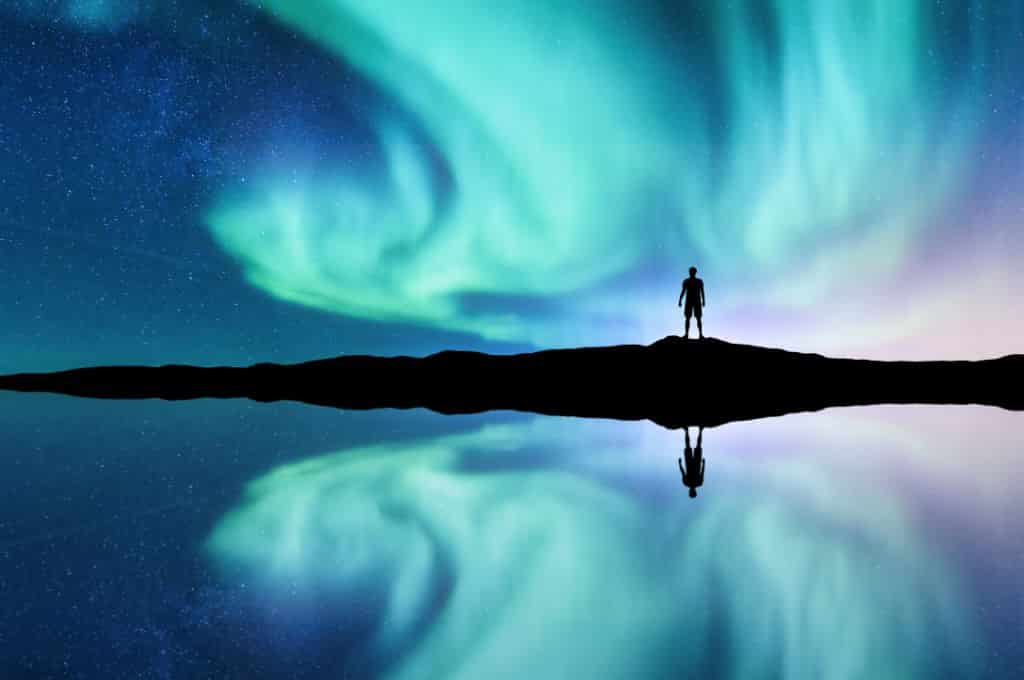The Northern Lights, also called the Aurora Borealis, are a spectacular natural light display in the Earth’s sky that is usually observed in high-latitude regions around the Arctic and Antarctic. When charged particles, such as protons and electrons, collide with gases in the upper atmosphere of Earth, an aurora is created. The collisions produce tiny flashes that light up the sky in a variety of colors and dynamic light patterns resembling curtains, rays, or spirals.
The lights move quickly from tentative, barely perceptible veils to dazzling cones that seem to cover the sky. The auroras seem to “dance” or flicker across the sky as billions of flashes follow one another. The Northern lights we see are bluish-green, with occasional red or lilac veils.
Galileo chose the term “aurora borealis” in 1619, derived from the Roman goddess of dawn and the Greek name for the north wind. The aurora australis, or southern lights, has features similar to the aurora borealis and shifts in tandem with changes in the northern auroral zone.

Best Time to See Northern Lights
Witnessing the Northern Lights is never guaranteed as they are a natural phenomenon. The best time to see the Northern Lights is during the aurora season, which begins in late August and lasts until mid-April. The months of September and March are especially favorable because of increased solar activity during the equinoxes. It is rare to see the Northern Lights between April and August because many of the best locations to see them are so far north that they have almost constant daylight during the summer. Several factors influence the visibility of the Aurora Borealis:
- Darkness: The Northern Lights are prominent during the polar night when the Northern Hemisphere goes through prolonged periods of darkness. Usually, this occurs in late November or early January.
- Solar Activity: The interaction of charged solar particles with the Earth’s magnetic field is what causes the Northern Lights. Solar activity impacts the intensity and frequency of the Aurora Borealis.
- Weather Conditions: Clear, dark skies are essential for the most optimal Northern Lights viewing. Selecting a spot with minimal light pollution and clear skies is essential because cloud cover can obstruct the panorama.
- Geomagnetic Activity: The chance of seeing the Northern Lights increases with high levels of geomagnetic activity, which are frequently gauged by the Kp index. Generally speaking, an Aurora viewing experience is…
Click Here to Read the Full Original Article at Take Off With Me…